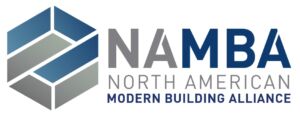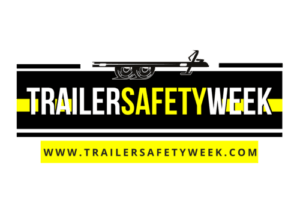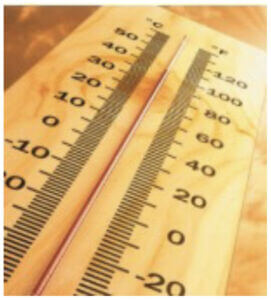Health & Safety
An absolute top priority for SPFA and the industry as a whole is a focus upon both chemical, and general worksite, health and safety. Spray foam is a high performing product capable of producing substantial energy savings through high R-Values combined with air-sealing in one product. It is essential that the product be installed safely and properly to realize the best possible performance and ultimate customer satisfaction. Safety, along with attention to quality and detail, are what amount to a good SPF project.
Our member based Safety Committees offers safety webinars, along with OSHA-compliant safety signage, tool box talks and model written safety programs. All of these resources can be found in the Member InfoHub. Additional topics are covered regularly at the annual Sprayfoam Convention & Expo and in the pages of Sprayfoam Professional Magazine.
Health and Safety Guidelines for Spray Polyurethane Foam (SPF) Professionals
Below are links to select webpages and important documents available from the American Chemistry Council’s Center for the Polyurethanes Industry. These documents, developed by industry experts, represent best practices for spray foam contractors for the safe application of spray polyurethane foam.
When using these documents, we ask that any PDF files should not be posted on company websites. Instead, please use the link provided below. That ensures that you are using the most recent version of the document since they are updated regularly.
Worker/Industry Health and Safety Guidance - American Chemistry Council - General industry information on the use of diisocyanates (SPF A-side materials)
Health and Safety Guidelines for SPF Professionals
- Health and Safety Product Stewardship Workbook For High Pressure Application of Spray Polyurethane Foam (SPF) [DOC]
- Indoor Commercial and Residential Insulation Using Spray Polyurethane Foam Containing MDI/PMDI: Seven Important Points for Spray Polyurethane Foam Contractors [DOC]
- Exterior Applications Using Spray Polyurethane Foam Containing MDI/PMDI: Seven Important Points for Spray Polyurethane Foam Contractors[DOC]
- Guidelines for Exterior High-Pressure Spray Polyurethane Foam Insulation Health and Safety Q&A| (Spanish) [DOC]
Potential Health Hazards of SPF Chemicals
- General Hazard Communication Guidance for SPF Insulation Applications [DOC]
- Have You Read the SDS? [RIG POSTER]
- Ventilation Considerations for Spray Polyurethane Foam [DOC]
- Fire Safety Guidance: Working with Polyurethane Foam Products During New Construction, Retrofit and Repair[DOC]
- Good Safety Practices – Application [RIG POSTER]
- Good Safety Practices – Drum Handling [RIG POSTER]
- Good Safety Practices – Equipment Storage [RIG POSTER]
- Good Safety Practices – Gun Maintenance [RIG POSTER]
- Good Safety Practices – Personal Protective Equipment [RIG POSTER]
- Good Safety Practices – Spill Containment [RIG POSTER]
Homeowner/Building Occupant Outreach
- Selecting and Working your SPF Contractor [DOC]
- “Green” Marketing Claims and Spray Polyurethane Foam[DOC]
Personal Protective Equipment (PPE)
- Interior Spray Polyurethane Foam Insulation Personal Protective Equipment[RIG POSTER]
- Exterior Spray Polyurethane Foam Insulation Personal Protective Equipment[RIG POSTER]
Sampling and Testing
Removal and Disposal
Center for the Polyurethanes Industry (CPI) Online SPF H+S Training
CPI, coordinating with SPFA and our members, produced this free on-line training module that all construction trades, homeowners, and spray foam professionals should complete. This is an approximately two-hour online webinar taken at your own pace. There is an online test at the end, and upon successful completion you will be issued a certificate and wallet card with an ID number.
Safety Data Sheets (SDS)
One of the most important hazard communications (HAZCOM) mechanisms on any worksite is the Safety Data Sheet (SDS). According to OSHA The Hazard Communication Standard (HCS) (29 CFR 1910.1200(g)), revised in 2012, requires that the chemical manufacturer, distributor, or importer provide Safety Data Sheets (SDSs) for each hazardous chemical to downstream users to communicate information on these hazards.
The "A" side of a spray polyurethane system is commonly comprised of methylene diphenyl diisocyanate (MDI) and polymeric methylene diphenyl diisocyanate (pMDI). The "B" side is typically a blend of polyols, catalysts, blowing agent, flame retardant, and surfactant. SDSs for both A and B side chemicals in a spray polyurethane system should be consulted before use to determine the components present on the worksite, understand the exposure potentials as well as implementing policies and procedures to reduce exposure, including engineering controls and personal protective equipment.
Isocyanate Sensitization
Here is a on-demand webinar from the American Chemistry Council’s Diisocyanates Panel and Aliphatic Diisocyanates Panel that provides an introduction and basic overview of the available science concerning sensitization and diisocyanate-related occupational asthma.
Speakers include Dr. Ines Krueger of Covestro, Dr. Cynthia Graham of Huntsman and Mr. Mark Spence of the International Isocyanate Institute. The webinar addresses topics such as what is sensitization, what is “work-related” asthma, how does diisocyanate exposure relate to respiratory sensitization, how do doctors diagnose “work-related asthma,” and why are medical surveillance programs important? The intended audience for this webinar includes value chain stakeholders that are involved in product safety interactions, as well as occupational health and safety professionals who may field questions related to the sensitization potential of diisocyanates.
Jobsite Fire Safety Webinar
A webinar on Fire Safety for SPF Contractors was presented by SPFA on June 13th from 4:00-5:00 PM as part of our Tech Tuesday webinar series. SPFA is making this on-demand recording free for both members and non-members.
Fire Performance
SPF (spray polyurethane foam) is a combustible material that requires proper fire safety measures during and after installation. Contractors typically post a “No Hot-Work” sign to prevent welding or open flames near the SPF before fire protective coverings are applied. Building and fire codes mandate that SPF must achieve the same fire performance as other building materials and be separated from interior spaces with a 15-minute thermal barrier, usually achieved with gypsum wallboard or plywood. Alternatively, intumescent paints can be used if they pass specific fire tests.
In attics and crawlspaces not regularly accessed, SPF must be covered with an ignition barrier or pass specific burn tests. It's crucial to ensure that thermal or ignition barriers meet building code requirements, verified through ICC-ES reports or other evaluations. Consumers should be informed about the products used and ensure code compliance reports are available. For more details on fire safety and barriers for SPF, refer to SPFA’s AY-126 guidance document.

The North American Modern Building Alliance (NAMBA) has recently published several documents related to fire safety in the construction workplace.
- Five Common Principles of Building Fire Safety This sets the stage for construction site safety. It tells the bigger story. Fire safety involves a chain of activities and stakeholders. Everyone and everything plays a vital role. Including prevention where the construction site safety protocols are super important.
- Construction Site Safety Guide (PDF) When a building is under construction many of the code requirements and systems are not in place yet. Therefore, the safety protocols for construction sites need to be taken seriously.
- Smoke Toxicity and Epidemiology All combustible materials produce toxic smoke when burned (including wood).
Founded in 2020 as part of the American Chemistry Council, NAMBA is a leading voice on the safe and effective use of plastic building materials in building envelopes. We believe having an informed public and robust codes and standards are essential to supporting a multi-layered approach to building fire safety.
Uncertainties at work and at home by the COVID-19 pandemic, compounded by building material availability, are leading causes of suicide and substance abuse across the entire construction sector. The SPFA Board has contracted with CSDZ to develop this webpage containing resources dedicated to prevention of suicide and substance abuse.
Suicide and Substance Abuse Prevention Program

Recognizing that many SPF contractors use trailer-mounted rigs, SPFA has partnered with The National Association of Trailer Manufacturers (NATM) for its annual safety initiative National Trailer Safety Week (TSW) held on June 4-10, 2023. This trailer safety effort aims to close the gap of communication between trailer manufacturers, dealers, and end-users of trailers to make towing safer and raise awareness of safe towing practices.
End-users are vastly undereducated on the proper use of trailers; they recognize they would not purchase a car without seatbelts but do not understand that purchasing a trailer without key safety features can be just as dangerous. It is crucial to disseminate essential how-to information regarding proper towing, loading, and maintenance to reach the broad audience of trailer users across the nation. Trailer Safety Week aims to provide this education to end users through connections with trailer dealers, manufacturers, suppliers, law enforcement and traffic safety groups.
Trailer Safety Webinar
Supporting this traffic safety effort is easy! Everyone is encouraged to share www.TrailerSafetyWeek.com with their audiences so that any trailer user can instantly access trailer safety and maintenance information necessary for safe towing and ultimately safer roadways. This website is free, easily accessible, mobile friendly and houses information including hitching, loading, maintenance, cargo securement, tires, driving tips, ensuring the right vehicle combination, brakes and the importance of purchasing NATM compliant trailers.
Safe trailering practices save lives, and with millions of trailers—used by businesses, local governments, and individuals—traversing the nation’s roadways every day, it is crucial to ensure that trailers are being towed safely for the sake of everyone on the roads.

Each year in the U.S., dozens of workers die and thousands suffer heat illness by exposure to hot or humid jobsite conditions. SPF contractors should know about heat illness and prevention, especially those working on hot roofs or inside hot attics. OSHA implemented a heat illness awareness program in 2022 and is currently developing heat illness regulations. OSHA also has some great resources on heat illness prevention on their website. SPFA member contractors are also encouraged to view SPFA’s recorded TechTuesday Heat Illness and Prevention Webinar. Additionally, there are
several smartphone apps to help monitor jobsite conditions and recommend breaks to avoid worker heat illness. Take a few minutes to learn more about heat illness to protect your workers this summer. Better yet, join the SPFA Safety Committee to learn more about worker safety.
For more information on heat illness and prevention, contact Rick Duncan, SPFA Technical Consultant at rickduncan@sprayfoam.org
EPA SPF Contractor Checklist - This contractor checklist is aimed at helping spray polyurethane foam (SPF) professional contractors protect themselves, workers and others. This checklist was prepared as a voluntary aid to protect against potential risks from SPF; it is not a regulatory compliance tool. However, some of the best practices included in the checklist may be required under local, state or federal worker protection or other regulations. Esta página también incluye la orientación en Español.
OSHA Construction Compliance Tips - General resources on OSHA's website that will help you comply with OSHA requirements and prevent workplace injuries and illnesses.

